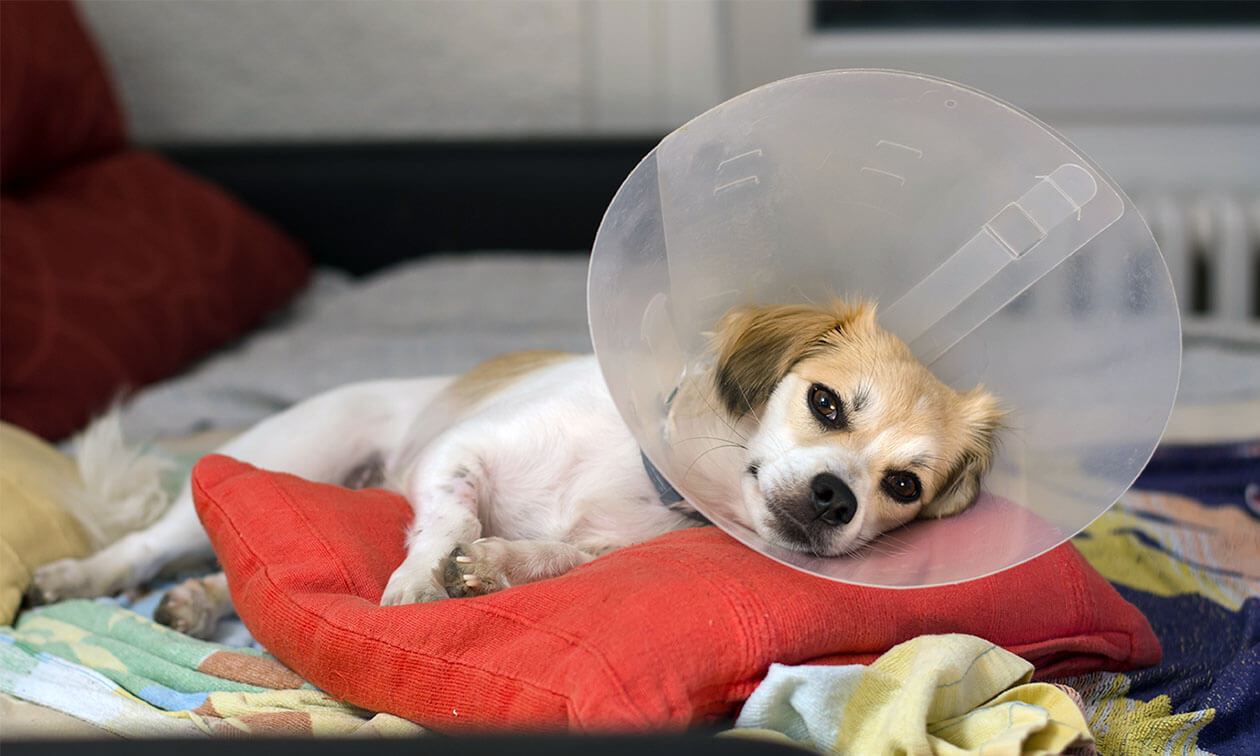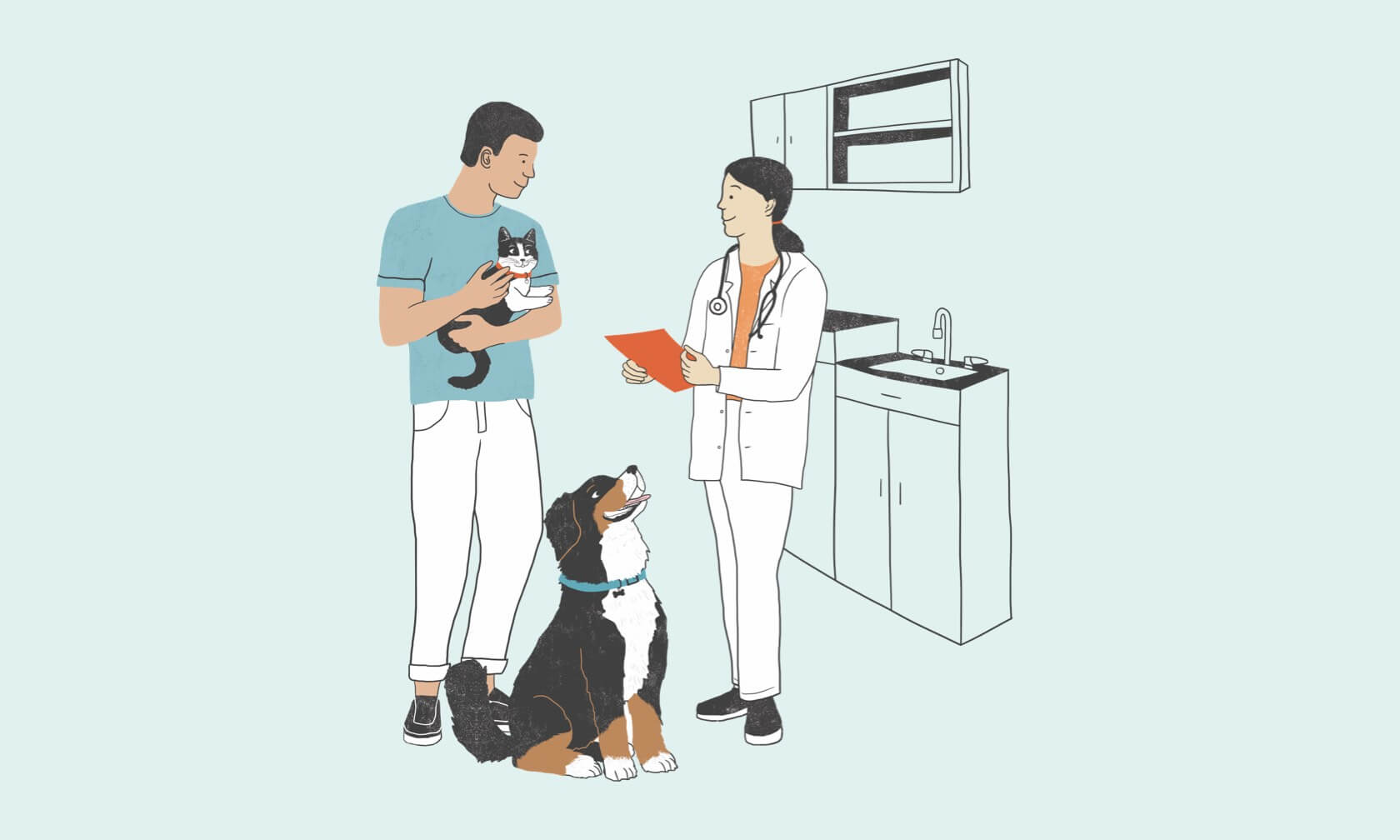We all know that people can get hernias, but what about dogs? Yep, your dog can get a hernia too. While the term may sound alarming, hernias are relatively common in dogs and, in many cases, treatable with proper veterinary care. Here’s what to know about dog hernias so you’re prepared if it happens to your furry friend.
What Is a Dog Hernia?
Hernias can occur in several areas of the dog’s body. The term hernia means that there is a weakness in muscle or connective tissue. Organs, fat, or other tissue can push through this hole or a tear in the muscle wall/connective tissue of the abdomen, diaphragm, or pelvic wall. When organs or fat push into the hernia, it often resembles a bulging, soft, balloon-like mass.
Dog hernias can range from non-serious to life-threatening based on their location. The location and severity of the hernia determine how complicated the repair will be. A serious or life-threatening hernia affects your dog’s bodily functions, such as digestion or breathing. If organs or tissues get trapped within a hernia, your dog’s blood supply can be cut off, possibly leading to inflammation, infection, or impairment of that bodily function.
Causes of Hernias in Dogs
Dog hernias are either congenital or acquired. Most dog hernias are congenital which means they have it at birth. Acquired hernias are hernias that a dog can get later in life from various cases. Spaying or neutering dogs with congenital hernias can help eliminate the condition by preventing it from passing down to future generations.
Acquired dog hernias result from pregnancy, obesity, or trauma such as a dog fight or being hit by a car.
There are five common types of hernias in dogs.
Umbilical Hernia
This is the most common type. It’s often a congenital hernia and is generally the one seen in puppies. If your dog has an umbilical hernia, you will notice a soft and squishy protrusion near their belly button. Frequently, your veterinarian can repair these when they spay or neuter your dog.
Inguinal Hernia
These can be congenital or acquired. You will notice a lump on one or both sides of the lower belly near the upper inner thigh. With an inguinal dog hernia, the bladder, uterus, or intestines protrude through the opening in the lower abdominal wall.
Diaphragmatic Hernia
This hernia occurs in the diaphragm and can be congenital or acquired. When a diaphragmatic hernia occurs, one or more abdominal organs (stomach, liver, and intestines) protrude into the chest cavity. This type of hernia is very serious and can be life-threatening if not treated promptly because it can affect the lungs and possibly the heart.
Perineal Hernia
This hernia can be congenital in puppies or acquired in adult dogs. The cause is not fully known in dogs. If your dog has a perineal hernia, you will notice a lump or protrusion on one or both sides of your dog’s anus. Some side effects are constipation, urinary incontinence, difficulty peeing and pooping, pain, and lethargy.
Hiatal Hernia
This is a different form of a diaphragmatic hernia and can be congenital or acquired. There is an opening in the diaphragm where the esophagus meets the stomach. Issues occur when part of the stomach or other abdominal organs protrude up into the opening of the diaphragm. A hiatal hernia can cause your dog to have issues with swallowing and cause vomiting, regurgitation, and excessive drooling. Dogs are at an increased risk of aspiration pneumonia when they have hiatal hernias. These can be repaired by surgery, but sometimes medical management is an option.
Dog Hernia Symptoms
Most times owners are made aware that their dog has a hernia because their veterinarian will notice it on a physical exam. The symptoms your dog may exhibit are based on the location and severity of the hernia. Since the hernia can impact your dog’s bodily functions, it’s important to contact a veterinarian if you notice any of these:
- A swollen, warm, or discolored lump — especially if it’s painful
- Change in appetite
- Lethargy
- High Fever
- Drooling
- Difficulty breathing
- Coughing
How Are Dog Hernias Treated?
As soon as you notice that your dog has a hernia, it’s important to have them evaluated by a veterinarian. Surgery is required for most hernias, though there are instances, such as with a hiatal hernia, where it may be medically managed.
Your dog can suffer from significant pain and is at risk of medical complications if a hernia is left untreated.
During the surgical repair of your dog’s hernia, the organs, fat, and other tissues protruding through the hole are put back in place. In some cases, these tissues may adhere to the opening, which will require an additional step in the repair process.
Once all the tissue is back in place or removed from the hernia, the surgeon will then remove any scar tissue surrounding it and then stitch it closed. In some cases, your veterinarian will put mesh over the repaired hernia to help strengthen it and prevent another tear.
Following surgery, your veterinarian will provide you with detailed instructions for care. Activity restriction and close monitoring of the surgical site are critical. Be sure to keep all follow-up visits with your veterinarian to ensure your dog is healing properly.
ZPC-02552



